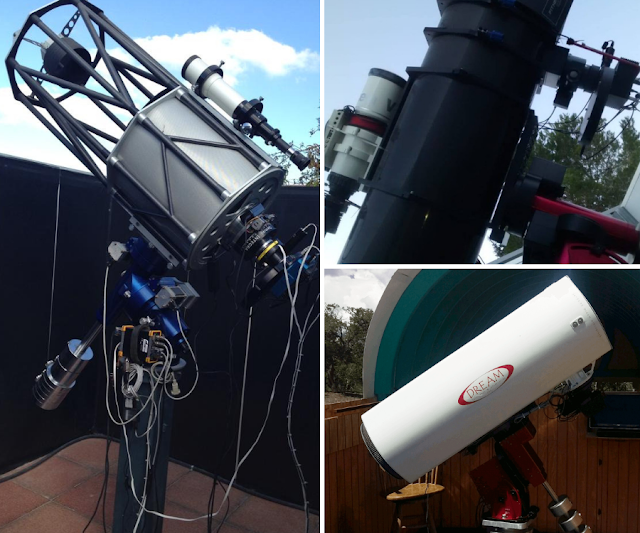 |
| Mosaic image of The Iris Nebula, also known as NGC 7023 processed by Paul Swift using data collected by Carmelo Falco, Insight Observatory, and the majority of the data by Paul himself. |
This mosaic of the Iris Nebula is made up of data from different focal lengths. 380mm, 1330mm, 1525mm, and 3400mm. This image shows some magenta at the core in the form of reddish photoluminescence. The data collected by Paul Swift was from his backyard in Valencia, Spain. His setup consists of VSD Vixen 380mm and 14" Orion Optics AG 1330mm Newtonian astrograph on a Paramount MX mount, an SX-46 CCD camera with an SX Maxi wheel (with Luminance, Red, Green and Blue filters) from Starlight Xpress Ltd.
The central area image data of the nebula was collected by Carmelo using a 16" f/7.8 (customed 3400mm) Ritchey-Chretien telescope on an RM500 mount accompanied by an Apogee Asping GG16m CCD camera, Orion SteadyStar - Lodestar guiding system, and a Baader Luminance, Red, Green and Blue filter set.
Additional Luminance data for the outer areas of the nebula was collected by Insight Observatory's 16" f/3.7 astrograph reflector, ATEO-1. This image data was purchased by Mr. Swift as part of Insight's "Datasets on Demand" service where astrophotographers may request data to be acquired from ATEO-1 and ATEO-2A for the purpose of combining the image data with their own. After delivery of the requested image data, it is then added to the Starbase dataset library. Starbase is a deep-sky dataset subscription service that will be accessible via Insight Observatory's ATEO Portal this mid-summer.


No comments:
Post a Comment